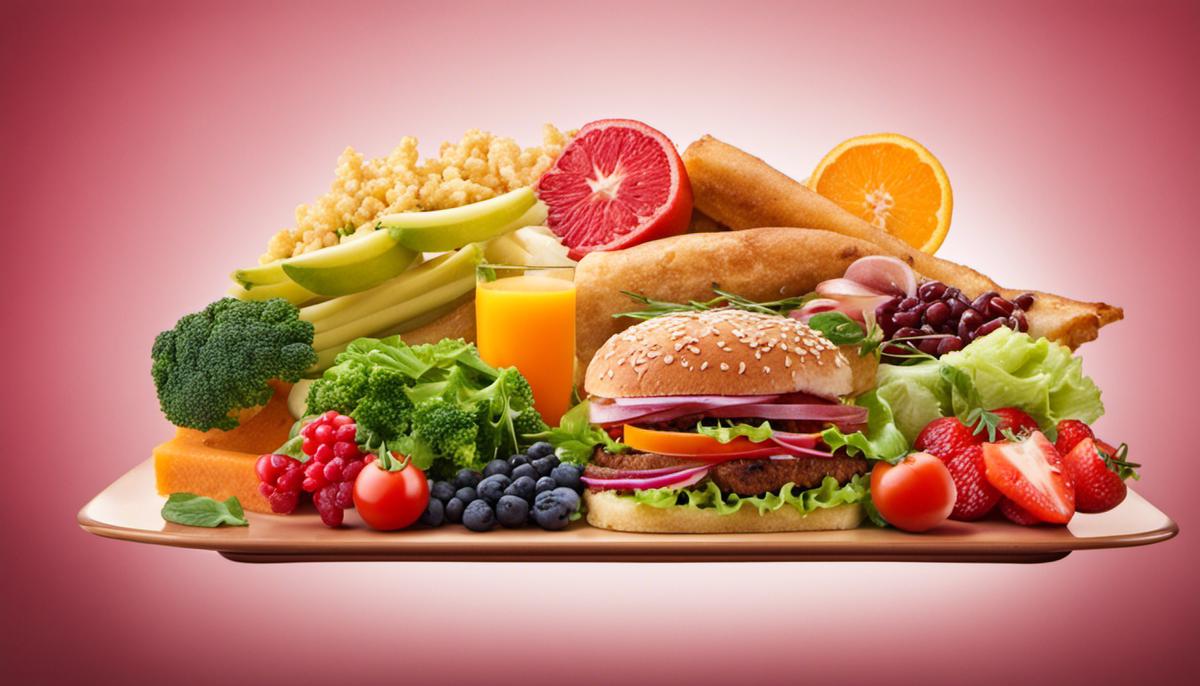In today’s fast-paced world, nurturing healthy eating habits for ourselves and our family members often falls by the wayside. Yet, we must remind ourselves, eating healthily is not just about losing weight or strictly adhering to a diet. It forms the very base of our well-being, enhancing our body’s ability to function and preventing the onset of lifelong diseases. Understanding the importance of healthy eating, comprehending the basics of nutrition, planning healthful meals, and nurturing those habits especially among the young ones, serve as the backbone of our overall health and well-being. Imbibing this lifestyle does not have to be difficult; it can be accessible, enjoyable, and most importantly, rewarding.
Understanding the Importance of Healthy Eating
The Crucial Importance of Healthy Eating Habits in the Family
Hello, wonderful parents, and welcome! It’s indisputable that the home is the primary hub where values, habits, and lifestyle choices are instilled. Of these, none is more fundamental than the way we nourish our bodies daily. That’s why it’s absolutely crucial to adopt healthy eating habits within the family. An early start to wholesome living can affect the family’s wellbeing now and set the stage for a healthier future for the kids.
Influencing Future Generations
Starting kids off with the right attitude towards food at home matters greatly. Nutritious, balanced meals teach younger generations how foods impact their bodies and minds. This knowledge, when instilled from a young age, sets them up with healthy habits they’ll carry forward.
Fostering Strong Bonds
Ever notice how joyful family moments often revolve around food? As families gather around to share meals, it isn’t just about the nutrition; it’s also about nurturing strong family bonds. By cooking healthy meals together, families can spend quality time, resulting in stronger, happier connections.
Warding off Health Issues
Eating the right foods plays a vital role in avoiding health issues such as obesity, diabetes, and even certain types of cancers. A diet rich in fruits, vegetables, lean protein and whole grains can build a robust immune system and promotes the smooth functioning of our bodies.
Promoting Better Mental Health
Did you know that your diet can affect your mood and mental health? Scientific studies suggest a clear link between diet and mental health. A diet consisting of junk or highly processed food can lead to anxiety and depression. On the other hand, a balanced diet rich in nutrients can help manage these conditions and promote general wellbeing.
Boosting Energy Levels
Eating healthy and nutritious food provides the necessary fuel to our bodies, boosting our energy levels and maintaining them throughout the day. Busy families functioning on good energy are generally more productive, have better focus, and are happier — this can be especially helpful when it comes to juggling work, school, chores, and extra-curricular activities.
Embracing a healthy eating regime in the premise of home makes it easier for the entire family to make informed and beneficial dietary choices. As parents, it is a top responsibility to guide our kids and set them up for a lifetime of splendid health. So enjoy exploring colorful ingredients, take pleasure in creating wholesome recipes, and above all, relish in knowing that each bite builds a healthier, happier family. Now, who’s ready to whip up some delicious, nutrient-packed family meals?

The Basics of Nutrition
Title: Fueling Family Health: Essential Nutrients and How to Incorporate Them
No family, big or small, can skimp on essential nutrients, the building blocks for a healthier, happier life. Ensuring everyone – from the tiniest tot to the favorite uncle – is well-nourished demands thoughtful planning and a dash of creativity. Now, don’t be overwhelmed – it’s not as intricate as it may sound at first. Let’s unravel the mystery of these vital nutrients, together, and discover delightful ways to integrate them into your family’s diet.
There are six essential nutrients – Protein, Fats, Carbohydrates, Vitamins, Minerals, and Water – that no one can live without. Harnessing the power of these nutrients can advance your family’s health in leaps and bounds. Using them to guide your grocery shopping and meal planning will coax smiles and satisfied bellies around the family table.
Proteins, the body’s building blocks, aid growth and muscle development. It’s not simply about slapping more steak on the family table, though. Imagine the joy on little faces as they discover protein-rich foods like hummus, quinoa, and Greek yogurt. Nuts make for fantastic protein-packed snacks – go ahead and try introducing your youngsters to an almond or cashew butter spread.
Then, there’s Fats. Often regarded as the bad guy, it’s a crucial nutritive superhero when consumed in moderation! Healthy fats, like those found in avocados, salmon, and olive oil, support brain function and cell growth. Introduce a family tradition – say, Salmon Saturdays. Or, include avocados in breakfast smoothies for a creamy, nutritious twist that’ll have everyone asking for seconds!
Carbohydrates, providing energy, are essential too. Go for complex carbs to keep the family fueled throughout the day! Think brown rice, whole wheat bread, and oats – these don’t spike blood sugar levels and are jam-packed with fiber to keep everyone feeling full longer.
Let’s not forget the vitamin and mineral army– offering a multitude of health benefits from strengthening immune systems to promoting bone health. Skip the sweetened vitamin gummies and go straight for the source with a rainbow of fruits and vegetables. Create a ‘Colorful Plate’ challenge and see who can incorporate the most colors in a meal.
There’s no life without water. This nutrient cleanses toxins and aids digestion. To ensure everyone stays well-hydrated, make water the family’s primary drink. Decorate individual water bottles and voila – instantly making water-drinking more fun.
Now that you’re armed with this knowledge, the mission becomes to create family meals that are healthful and enjoyable. Remember, variety is the spice of life – and the key to balanced nutrition. Don’t be afraid to experiment and involve the whole family in cooking. With these tips in hand, here’s to fostering robust health and forging even closer family ties, one nutrient-packed meal at a time.

Planning Healthful Meals and Snacks
Aiming for Balance in Meals and Snacks
Let’s push the conversation further, beyond just crafting colorful plates and making water the primary drink. The next step on this healthful journey is to strike the right balance in meals and snacks. Moderation is key when considering the amount of proteins, fats, carbohydrates, vitamins, and minerals in your family’s diet. It simply means not overdoing or neglecting any nutrient group. Relish proteins at lunch, swirl in healthy fats at dinner, pop in fibrous carbs at breakfast, sneak in an array of vitamins throughout the day, and never skimp on minerals.
Having Fun with Healthy Meal Prep
Make the switch from spontaneous to planned meals. A meal plan not only ensures a balanced diet, it also diminishes last-minute unhealthy food choices. Create themed meals like ‘Mediterranean Mondays’ or ‘Fiesta Fridays’ to keep the family excited about the week’s menu. Make this a fun activity by involving the whole family in the planning process. Let meals be a platform for introducing the family to various cuisines while ensuring a balanced intake of nutrients.
Stellar Snacks
The right snacks can help meet the daily nutrient requirements, keep hunger pangs at bay, and make healthy eating enjoyable. Arm yourselves with an arsenal of nutrient-rich, tantalizing snacks like veggie sticks with yogurt dip, apple slices smeared with peanut butter, or homemade granola bars with nuts and dried fruits.
Engaging Picky Eaters
Do your kids scrunch up their noses at broccoli or spinach? It’s time for a creative twist! Incorporate the not-so-favored veggies in soups, patties, or smoothies. Create a burst of exciting flavors by seasoning veggies with herbs and spices or pairing them with a favorite protein. Brightly colored foods are naturally appealing to kids, so playing with vibrant fruits and veggies can also help.
Portion Size Magic
A portion control strategy ensures kids aren’t overeating or undereating. Use smaller plates and bowls to naturally control portions. Encourage them to listen to their bodies and eat when they’re hungry, not just because it’s ‘meal time’.
Reinventing Drink Options
Switch up the drink options to boost nutrient intake and prevent monotony. Make fresh fruit juices, smoothies, or flavored water at home to ensure enhanced hydration along with nutrient ingestion.
The key to nourishing and enjoyable family meals lies in balancing nutrients, planning meals, getting creative with food presentation, controlling portions, and revisiting drink options. Let’s break the stereotype that healthy can’t be delightful! With the right attitude and approach, fostering healthy eating habits in your family can be smooth sailing. Give these ideas a spin and let good health and hearty laughter grace your family table.

Teaching Healthy Eating Habits to Children
One of the main aspects of fostering healthy eating habits is to strike the right balance in meals and snacks. Rather than eliminating ‘unhealthy’ foods entirely, it’s beneficial to involve a blend of nutritious and occasional ‘treat’ foods. This teaches children not to associate foods as ‘good’ and ‘bad’
Another effective method is to incorporate fun and creativity with meal prep. This could mean using cookie cutters to make sandwiches into fun shapes or creating fruit and vegetable art on a plate. During this quality time together, children learn that healthy food can be exciting and delicious, breaking the stereotype that healthy food can’t be tasty.
Healthy snacks are another excellent platform for nutrition. Try to fill half of every snack with fruits or vegetables. Consider apple slices with peanut butter or carrot sticks with hummus, these snacks can pack a punch of nutrients and still be satisfying.
When dealing with tricky eaters, creativity usually wins the day. A little spinach can disappear in a fruit-filled smoothie. Pureed veggies can be added to sauces or casseroles – where they blend right in. Trying out different recipes and presentation styles with disliked foods can make the difference.
In terms of portion control, clarity is key. For children, it’s essential to educate them to understand their bodies’ hunger and fullness signals. Also, using smaller plates and bowls can help guide portions and prevent overeating.
When it comes to drinks, water should be the go-to beverage. However, there are plenty of other healthy drink options like fresh fruit juices, unsweetened homemade lemonade, or delicious smoothies packed with fruits and veggies. Teach your child the importance of making water the primary drink and slowly decrease the number of sugary drinks.
A meal is not just about the food that is eaten, it’s about the experience and the memories that are created. Creating a positive, healthy eating environment from an early age will instill lifelong healthy food habits. It doesn’t happen overnight, but with consistency, patience, and creativity, a love for healthy eating can certainly be fostered.

Undoubtedly, the journey towards a healthier lifestyle can pose certain challenges, but the benefits that healthy eating brings undoubtedly outweigh the struggles. By taking one step at a time, keeping our nutrition knowledge updated, planning meals that everyone loves, and teaching our children the value of healthy eating habits, we can collectively lead healthier, happier, and longer lives. Let us remember, we don’t have to be perfect overnight; each healthy choice we make is a triumph and every small change contributes to a well-balanced, healthier lifestyle that lasts a lifetime.
